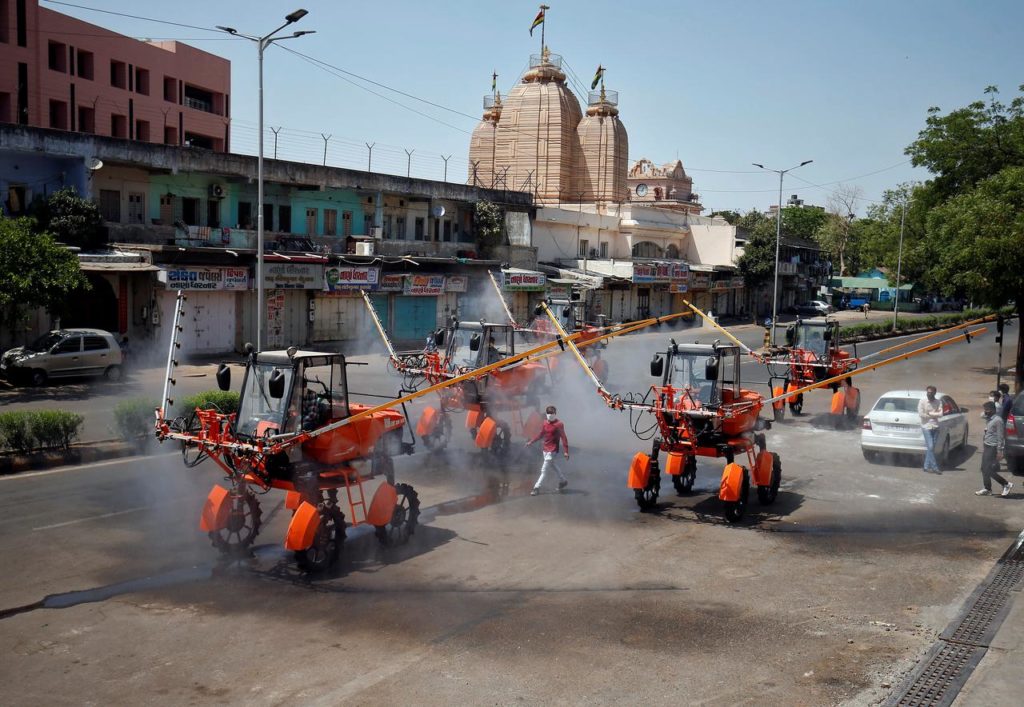Testing Times For India In Race To Stop Coronavirus Epidemic
Apr 6, 2020 | Pratirodh Bureau
Members of Fire and Emergency Services decontaminate a road using boom sprayers during a 21-day nationwide lockdown to slow the spreading of coronavirus disease (COVID-19), in Ahmedabad on April 5, 2020
India, like a lot of countries plunged into crisis by the pandemic, is struggling to ramp up testing for the coronavirus, but in few places would the odds of containing the disease appear so bleak should domestic transmission start to multiply.
Officials hope to be testing 20,000 people daily by the end of the week, four times the current rate.
Since India’s first case was confirmed on Jan. 30, they have only conducted 90,000 tests, having focused efforts on identifying people who had come in contact with anyone who has tested positive.
The results show 4,067 people are infected, and 107 have died of the respiratory disease.
Officials believe the three-week nationwide lockdown ordered by Prime Minister Narendra Modi will have slowed the spread of the virus in communities, giving them a chance to catch up in the race to stop a full blown epidemic.
“We are increasing our testing capacity progressively,” said Lav Agarwal, joint secretary in the health ministry, leading the effort to tackle the spread of infections.
“We should be not be panicking, we should be preparing,” Agarwal said.
“We have followed a pro-active policy from the beginning. Our focus has been on surveillance and contact tracing. Instead of the virus chasing us, we have been chasing the virus.”
Testing had already doubled in the last two days from 5,000 samples a day, another health official said. “This is expected to reach 20,000 in the next three days and increase further over the next few weeks as per the plan,” the official said.
Worldwide, more than 1.25 million people have been reported infected by COVID-19, and far wealthier countries than India have been fiercely criticised for their slow initial response, particularly regarding testing.
Having been chided for a lag in testing, the United States has overtaken China as the country suffering the most infections. The United States has now conducted around a million tests, and 336,000 people have tested positive.
But in a country like India, with 1.3 billion people, hundreds of millions of poor, living in unhygienic and crammed conditions, there is a very real fear that if the testing starts too far behind the curve, the confirmed cases won’t even account for the tip of the iceberg.
“There is unanimity among epidemiologists, doctors and district-level administrators that the need of the hour is aggressive and extensive testing,” said former finance minister P. Chidambaram and a leader of the opposition Congress party.
Yet, doctors say the campaign for mass screening is handicapped by a lack of both testing kits and protective gear for staff carrying out the tests.
